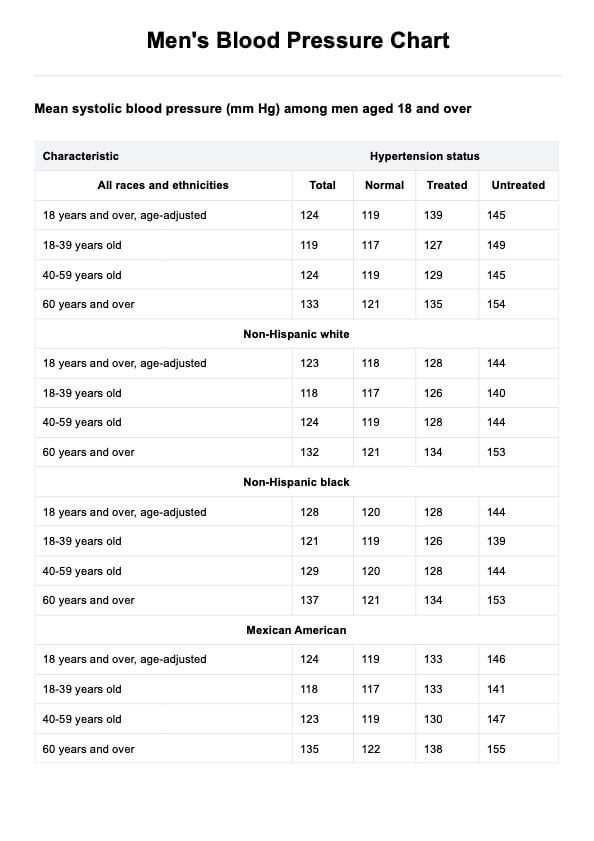The new normal blood pressure for seniors is generally considered to be below 120/80 mmHg, though slightly higher readings are common as people age. Blood pressure of up to 130/80 mmHg is often still acceptable for older adults, depending on their overall health.

Men's Blood Pressure
Track men's blood pressure levels easily with this Men's Blood Pressure Chart. Monitor and guide patients toward healthier cardiovascular health.
Men's Blood Pressure Template
Commonly asked questions
A reading of 140/70 mmHg may indicate elevated systolic blood pressure, which could signal the onset of hypertension, even though the diastolic number is normal. It’s important to monitor this and consult a healthcare provider to assess overall cardiovascular risk.
A blood pressure of 130/90 mmHg is considered borderline high, with elevated systolic and slightly high diastolic pressure. This indicates stage 1 hypertension and may require lifestyle changes or medical intervention.
EHR and practice management software
Get started for free
*No credit card required
Free
$0/usd
Unlimited clients
Telehealth
1GB of storage
Client portal text
Automated billing and online payments











